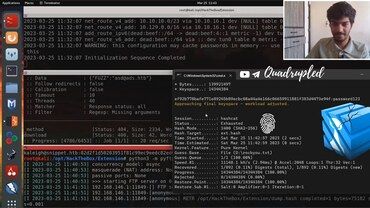Unlocking Secrets: How to Crack SHA256 Passwords with Hashcat
Are you curious about how hackers crack passwords? In this tutorial, we’ll explore one of the most powerful tools for password cracking: Hashcat. Specifically, we’ll show you how to use Hashcat to crack SHA256 password hashes.
SHA256 is a commonly used cryptographic hash function that can create a fixed-length, unique representation of any input data. It’s often used to hash passwords before storing them in a database. While SHA256 is a secure hash function, it’s not immune to attacks, and that’s where Hashcat comes in.
We’ll start by explaining the basics of hash cracking, including the difference between hashing and encryption, and the types of attacks that can be used to crack hashes. We’ll then dive into Hashcat, exploring its features and how to use it to crack SHA256 hashes. Along the way, we’ll cover topics like choosing the right attack mode, selecting the best wordlists, and using GPUs to accelerate the cracking process.
First of all, we’re going to obtain all the usernames and password hashes from the vulnerable API endpoint of website by sending a POST request to it. ( POST /management/dump )
Next, we’re going to create a file called “dump.hash” and transfer it to the host OS by launching a FTP server on Port 21 and then using the DownloadFile() method of powershell Net.WebClient class.
Finally, cracking the hash using the rockyou.txt as a wordlist.
Whether you’re a cybersecurity professional looking to improve your skills or just someone interested in learning more about password cracking, this tutorial will provide you with a comprehensive guide to using Hashcat to crack SHA256 hashes. So grab your favorite beverage, sit back, and get ready to break some passwords!




